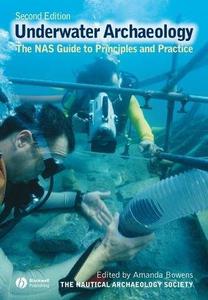
Underwater Archaeology: The NAS Guide to Principles and Practice, Second Edition By
2009 | 271 Pages | ISBN: 1405175923 | PDF | 13 MB
Underwater Archaeology: The NAS Guide to Principles and Practice provides a comprehensive summary of the archaeological process as applied in an underwater context. Long awaited second edition of what is popularly referred to as the NAS Handbook Provides a practical guide to underwater archaeology: how to get involved, basic principles, essential techniques, project planning and execution, publishing and presenting Fully illustrated with over 100 drawings and new colour graphics New chapters on geophysics, historical research, photography and video, monitoring and maintenance and conservation Content: Chapter 1 The NAS Handbook - Why It was Written (page 1): Chapter 2 Underwater Archaeology (pages 2-10): Chapter 3 Getting Involved in Underwater and Foreshore Archaeology (pages 11-14): Chapter 4 Basic Principles - Making the Most of the Clues (pages 15-33): Chapter 5 Project Planning (pages 34-37): Chapter 6 Safety on Archaeological Sites Under Water and on the Foreshore (pages 38-44): Chapter 7 International and National Laws Relating to Archaeology Under Water (pages 45-52): Chapter 8 Archaeological Recording (pages 53-64): Chapter 9 Historical Research (pages 65-70): Chapter 10 Photography (pages 71-82): Chapter 11 Position?Fixing (pages 83-95): Chapter 12 Underwater Search Methods (pages 96-102): Chapter 13 Geophysical and Remote?Sensing Surveys (pages 103-113): Chapter 14 Underwater Survey (pages 114-134): Chapter 15 Destructive Investigative Techniques (pages 135-147): Chapter 16 Archaeological Conservation and First?Aid for Finds (pages 148-162): Chapter 17 Site Monitoring and Protection (pages 163-169): Chapter 18 Archaeological Illustration (pages 170-180): Chapter 19 Post?Fieldwork Analysis and Archiving (pages 181-188): Chapter 20 Presenting, Publicizing and Publishing Archaeological Work (pages 189-197):
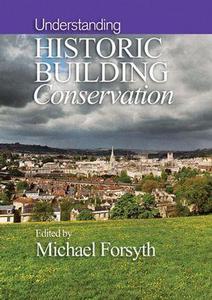
Understanding Historic Building Conservation By
2007 | 229 Pages | ISBN: 1405111720 | PDF | 5 MB
Understanding Historic Building Conservation discusses conservation philosophy and the importance of understanding the history of a building before making strategic decisions. It details the role of each conservation team member and sets out the challenges of conservation at planning level in urban, industrial and rural contexts and in the conservation of designed landscapes. The framework of legislation and charters within which these operate is described and the book also provides guidance on writing conservation plans, explains the fundamental issues of costing and contracts for conservation and highlights the importance of maintenance.Eighteen chapters written by the experts present today's key issues in historic building conservation: Timothy Cantell, Martin Cherry, Nigel Dann, Peter Davenport, Geoff Evans, Keith Falconer, Colin Johns, Jeremy Lake, Jonathan Lovie, Duncan McCallum, James Maitland Gard'ner, Martin Robertson, Adrian Stenning, David H. Tomback, Giles Waterfield, Philip Whitbourn, John WinterContent: Chapter 1 The Past in the Future (pages 1-8): Michael ForsythChapter 2 Architectural History and Conservation (pages 9-25): Martin CherryChapter 3 Conservation and Authenticity (pages 26-34): Martin RobertsonChapter 4 Regeneration and the Historic Environment (pages 35-45): Duncan McCallumChapter 5 Problems and Opportunities in Rural Conservation (pages 46-73): Jeremy LakeChapter 6 Sustainable Reuse of Historic Industrial Sites (pages 74-87): Keith FalconerChapter 7 Realms of Memory: Changing Perceptions of the Country House (pages 88-95): Giles WaterfieldChapter 8 Conserving Buildings of the Modern Movement (pages 96-106): John WinterChapter 9 Conservation and Historic Designed Landscapes (pages 107-122): Jonathan LovieChapter 10 International Standards and Charters (pages 123-130): Philip WhitbournChapter 11 Conservation Legislation in the United Kingdom: A Brief History (pages 131-139): Colin JohnsChapter 12 Conservation Legislation in the United Kingdom: Looking Ahead (pages 140-144): Colin JohnsChapter 13 The Role of the Archaeologist (pages 145-155): Peter DavenportChapter 14 Preparing the Conservation Plan (pages 156-174): James Maitland Gard'nerChapter 15 Costing and Contracts for Historic Buildings (pages 175-184): Adrian Stenning and Geoff EvansChapter 16 Maintenance in Conservation (pages 185-198): Nigel Dann and Timothy CantellChapter 17 Building Preservation Trusts (pages 199-203): Colin JohnsChapter 18 Valuing Our Heritage (pages 204-210): David H. Tomback

Ukraine & Russia - The Senseless War Of Territory, Ego & Show Of Power Ukraine & Russia: Hidden Truth & Media Propanganda: USA, NATO & USSR - How One Man ... by Bohuslav Aleksei Borysko
English | March 3, 2022 | ISBN: N/A | ASIN: B09TWY2PX5 | EPUB | 0.33 Mb
THIS BOOK REVEALS EVERYTHING YOU NEED TO KNOW ABOU THE CURRENT AND ONGOING WAR BETWEEN RUSSIA & UKRAINE AND ALSO THE ROLE OF OTHER WORLD POWER IN THE ONGOING CRISIS BETWEEN UKRAINE VS RUSSIA.
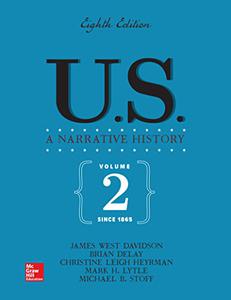
US: A Narrative History, Volume 2: Since 1865, 8th Edition
English | 2018 | ISBN: 1260025047 | 1056 Pages | PDF (conv) | 28 MB
U.S., a brief American History program, transforms the learning experience through personalized, adaptive technology helping students better grasp the issues of the past while providing greater insight on student performance. This American History program tells the story of the American people in a highly portable and visually appealing manner helping students better connect with our nation's past and understand our present.
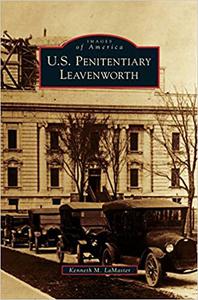
Kenneth M. LaMaster, "U.S. Penitentiary Leavenworth"
English | 2008 | ISBN: 0738550914, 1531631770 | EPUB | pages: 128 | 37.0 mb
On July 1, 1895, under the direction of warden James French, the first federal prison was born. That same year, St. Louis architects Eames and Young went to work drawing up plans for an institution that would house the most notorious offenders in the nation's history. At sunrise on March 1, 1897, 300 inmates and 30 guards marched three miles to the construction site located on the southwest corner of the military reservation. From sunup to sundown seven days a week in the hot Kansas summer to the harsh prairie winters, inmates labored building their new home. Leavenworth's rich history as a gateway to the Old West is second to none. Name a famous figure such as George Armstrong Custer, John Joseph Pershing, Dwight D. Eisenhower, or Colin Powell. They have all graced the streets of this historic community. Equally pick a name of the most notorious criminals. George "Machine Gun" Kelly, Robert F. Stroud, Frank Nash, Frank "the Enforcer" Nitti, and George "Buggs" Moran-they all stopped by to "spend time in Leavenworth."
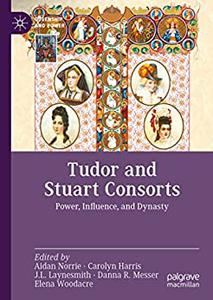
Tudor and Stuart Consorts: Power, Influence, and Dynasty
English | 2022 | ISBN: 3030951960 | 383 Pages | PDF (True) | 9 MB
This book examines the lives and tenures of all the consorts of the Tudor and Stuart monarchs of England between 1485 and 1714, as well as the wives of the two Lords Protector during the Commonwealth. The figures in Tudor and Stuart Consorts are both incredibly familiar-especially the six wives of Henry VIII-and exceedingly unfamiliar, such as George of Denmark, the husband of Queen Anne. These innovative and authoritative biographies recognise the important role consorts played in a period before constitutional monarchy: in addition to correcting popular assumptions that are based on limited historical evidence, the chapters provide a fuller picture of the role of consort that goes beyond discussions of exceptionalism and subversion. This volume and its companions reveal the changing nature of English consortship from the Norman Conquest to today.
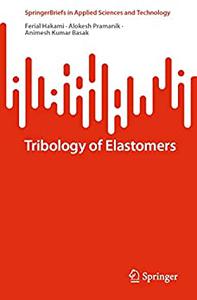
Tribology of Elastomers
English | 2022 | ISBN: 9811929076 | 239 Pages | PDF EPUB (True) | 38 MB
This book highlights the tribological behavior of elastomers by investigating the effect of operating variables such as, the applied load and the abrasive particle size, and the materials' mechanical properties such as, tensile strength, elongation at break, hardness, and tear strength by the experimental, statistical and analytical methods. It is found that the wear mechanism is mostly friction wear, which is mixed with fatigue wear and abrading under higher applied loads or larger abrasives. The statistical method shows that the abrasive particle size has the highest contribution followed by the applied load on the wear process. Wear equation is developed to predict the wear rate considering the trends of the input variables.

Edward J. Khantzian, "Treating Addiction: Beyond the Pain"
English | ISBN: 1538108577 | 2018 | 292 pages | PDF | 5 MB
In Treating Addiction: Beyond the Pain, Edward Khantzian offers a collection of his recent works on the study and treatment of substance abuse and addiction. Based on his five decades of experience in working with substance dependent individuals, this volume builds upon Khantzian's theory of addiction as self-medication and provides insights into how addiction is rooted in human psychological suffering, and not pleasure seeking or self-destruction. Almost without exception, life histories of human discomfort, disconnection, and unhappiness leave those so burdened to be vulnerable to the appeal of addictive drugs, including alcohol. Khantzian's sensitive teaching voice weaves together an annotated collection of previously published papers into a powerful and engaging volume of effective practice-based treatments. A timely complement to his earlier collection Treating Addiction as a Human Process, this book provides an inclusive and accessible resource for mental health professionals from any background as well as graduate students and those in training.
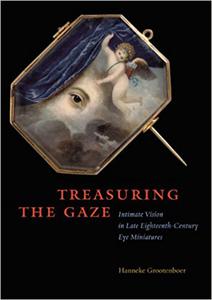
Hanneke Grootenboer, "Treasuring the Gaze: Intimate Vision in Late Eighteenth-Century Eye Miniatures"
English | 2013 | ISBN: 0226309665 | 223 pages | PDF | 10.8 MB
The end of the eighteenth century saw the start of a new craze in Europe: tiny portraits of single eyes that were exchanged by lovers or family members. Worn as brooches or pendants, these minuscule eyes served the same emotional need as more conventional mementoes, such as lockets containing a coil of a loved one's hair. The fashion lasted only a few decades, and by the early 1800s eye miniatures had faded into oblivion. Unearthing these portraits in Treasuring the Gaze, Hanneke Grootenboer proposes that the rage for eye miniatures-and their abrupt disappearance-reveals a knot in the unfolding of the history of vision. Drawing on Alois Riegl, Jean-Luc Nancy, Marcia Pointon, Melanie Klein, and others, Grootenboer unravels this knot, discovering previously unseen patterns of looking and strategies for showing. She shows that eye miniatures portray the subject's gaze rather than his or her eye, making the recipient of the keepsake an exclusive beholder who is perpetually watched. These treasured portraits always return the looks they receive and, as such, they create a reciprocal mode of viewing that Grootenboer calls intimate vision. Recounting stories about eye miniatures-including the role one played in the scandalous affair of Mrs. Fitzherbert and the Prince of Wales, a portrait of the mesmerizing eye of Lord Byron, and the loss and longing incorporated in crying eye miniatures-Grootenboer shows that intimate vision brings the gaze of another deep into the heart of private experience. With a host of fascinating imagery from this eccentric and mostly forgotten yet deeply private keepsake, Treasuring the Gaze provides new insights into the art of miniature painting and the genre of portraiture.
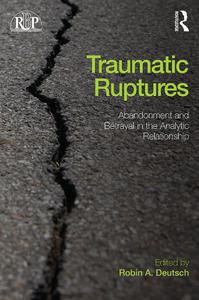
Robin A. Deutsch, "Traumatic Ruptures: Abandonment and Betrayal in the Analytic Relationship"
English | 2014 | pages: 239 | ISBN: 0415539315 | PDF | 1,6 mb
For much of its history, psychoanalysis has been strangely silent about sudden ruptures in the analytic relationship and their immediate and far-reaching effects for those involved. Such issues of betrayal and abandonment - the death of an analyst, a patient's suicide, an ethical violation - disrupt the stability and cohesion of the analytic framework and leave indelible marks on both individuals and institutions alike.


